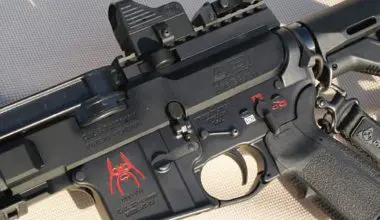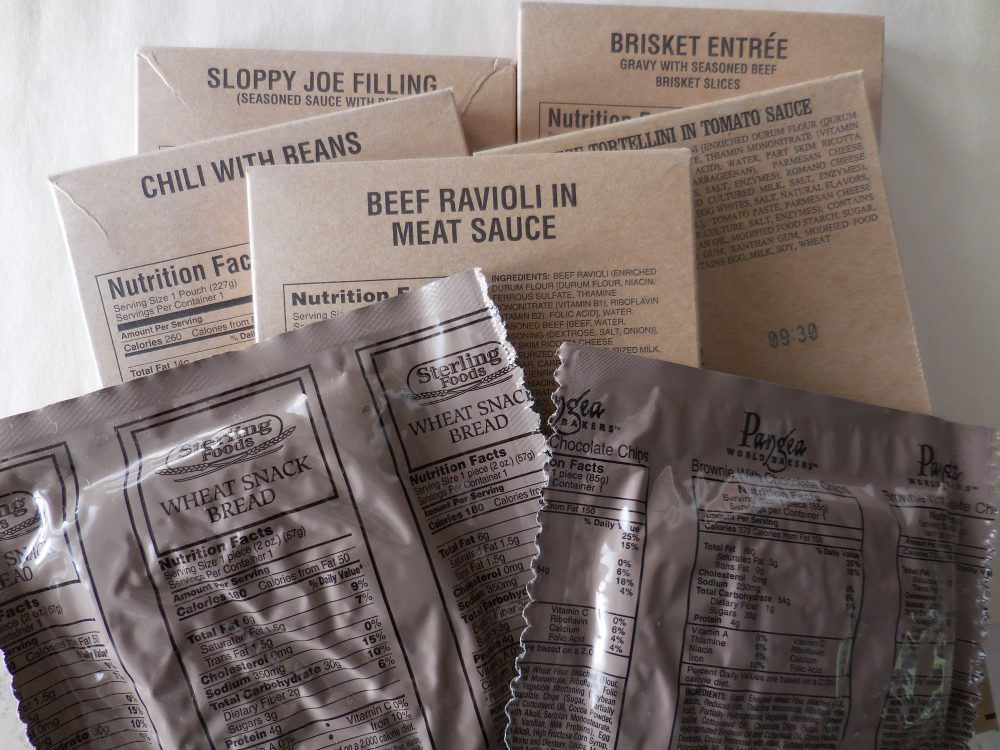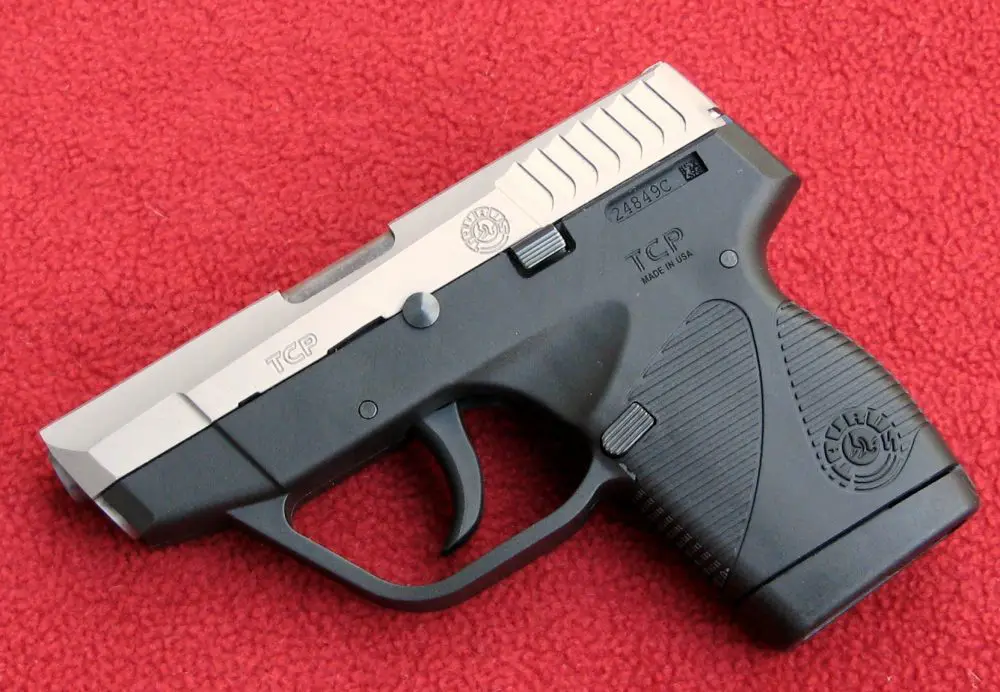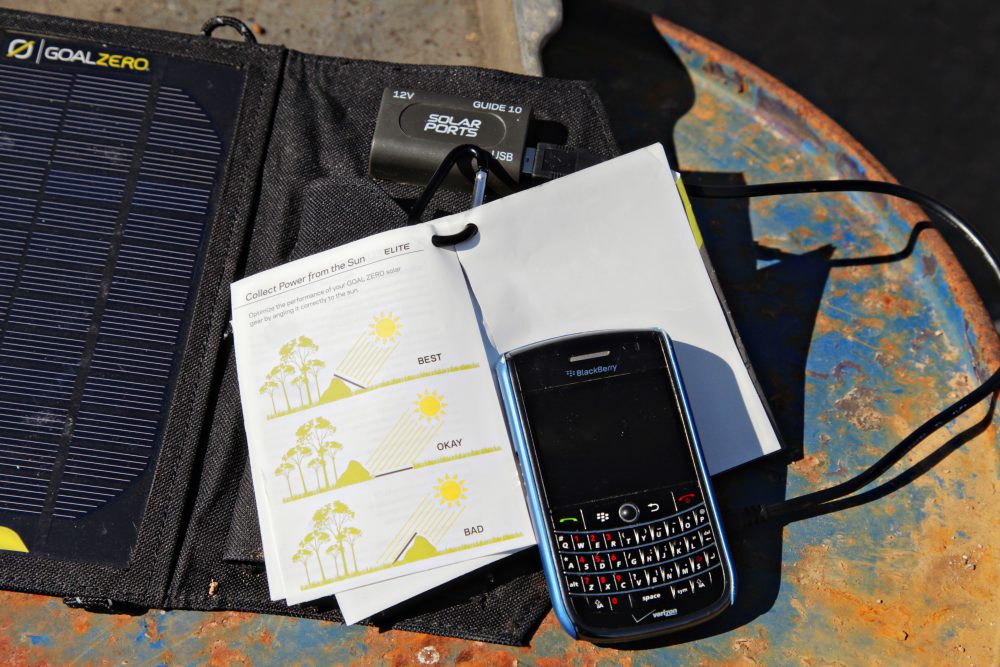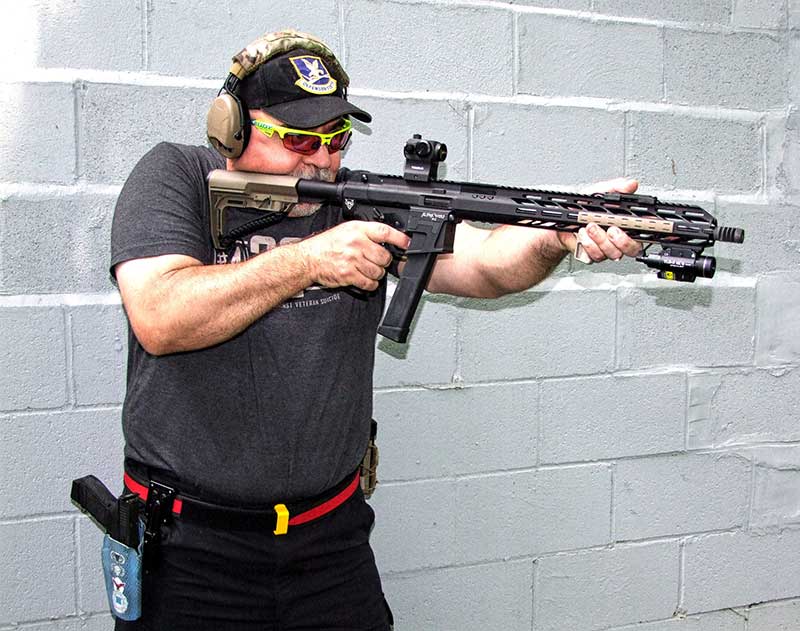
Pistol-caliber carbines are not a new invention. Cowboys, lawmen, outlaws, and citizens had them with their revolvers and rifles chambered in .44-40, .38-40, or .32-20.
In the early 2000s, we saw the development of the first true pistol-caliber carbine, at least by American standards. Marlin developed the Camp Carbine that fed off of 1911 magazines for the .45 ACP and Smith & Wesson Model 59 magazines for the 9mm.
KelTec offered the Sub 2000. This carbine chambered in 9mm and .40 S&W used Glock, Beretta, Smith & Wesson, and SIG Sauer magazines. I have one of the originals and have shot the daylights out of it. This carbine has seen many changes over the years and because of its popularity it is like finding a unicorn on dealer shelves today. Ruger also introduced the PC40 and PC9, which used Ruger P Series magazines.
These carbines sold like hot cakes and, for unknown reasons, both manufacturers suddenly stopped producing them. Many folks blame the Clinton Crime Bill with its ten-round magazine restriction. (Ruger has since introduced the PC Carbine, and several versions are available in 9mm and .40 S&W. The carbine ships with an SR-Series/Security-9 pistol magazine well installed. An additional magazine well accepting Glock magazines is included.)
During the mid-2010s, we saw a few AR-style pistol-caliber carbines but no great groundswell. But fast forward to 2017 — a year dubbed by many as the “Year of the PCC,” and PCCs were the talk of the SHOT Show. USPSA, IDPA, and 3-Gun competitions all introduced Pistol Caliber Carbine Divisions.

The dominant carbine was an AR design using a semiautomatic blowback system chambered in 9mm using Glock 17 magazines, because you could get 32-round magazines for them. One thing that stuck out was the price of the PCCs: They all had starting prices north of $1,500. For a fun gun, that is cost prohibitive to many folks. The other issue was that not everyone wants 9mm.
Table of Contents
FINALLY IN .45
At the end of the first quarter of 2018, Lone Wolf Distributors (LWD) introduced the Alphawolf PCC in .45. This was great news since, for the last couple of years, I have been doing work with Glock’s slightly smaller-framed 21SF and fell in love with it. Then I started shooting the Gen4 41 MOS for USPSA and carry when on the road. Now there was a PCC chambered in .45 ACP using Glock 21 magazines — what a perfect combination for travel. I think I even heard the spirits of Jeff Cooper and John Moses Browning applaud.
The Alphawolf is just like my 3-Gun M4. The first thing I did was remove the protective muzzle cap and install LWD’s .45 muzzle brake. Next I installed Plus2 Mag Extensions to take the capacity of the G21 from 13 to 15. While it may not seem like a lot, those two rounds do make a difference in competition. Only recently did LWD start selling SGM Tactical’s 26-round G21 magazines, which will put the .45 ACP nearly on par with the 9mm PCC in terms of ammo capacity.
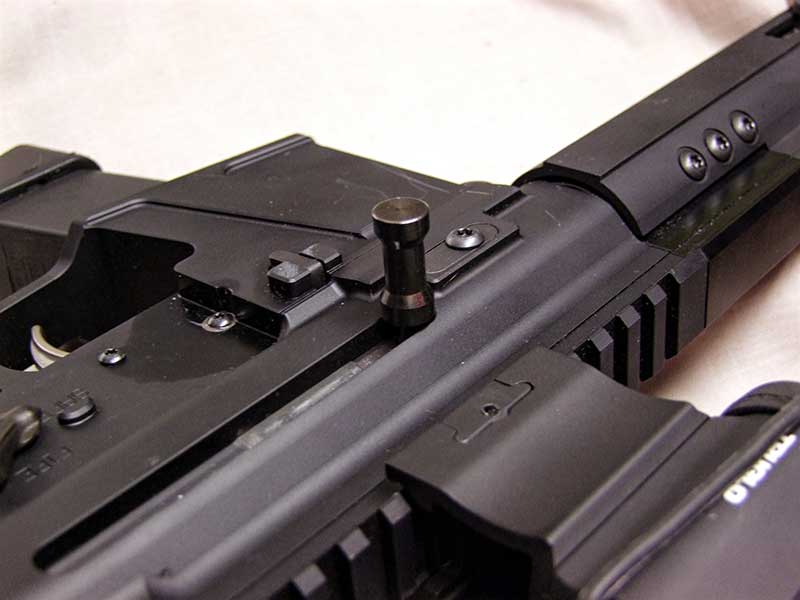
Next I gave the exterior a once over. The forearm is M-Lok compatible with a full-length top rail that mates flawlessly with the upper receiver rail. LWD positions the charging handle on the left side. I found this to be convenient and took very little effort to get used to. The magazine release is a large flush-fit paddle, which ensures you do not accidentally eject a magazine, but is easy to use on the reload. At the opposite end of the spectrum is the virtually non-existent bolt catch. I am not sure why LWD installed a barely useful catch. It will be the first item replaced on my Alphawolf.
The grip and six-position buttstock LWD installs on the Alphawolf work fine, but the pistol grip does not bridge the gap between the frame and grip. That sharp corner is annoying and painful under sustained shooting. I injected some generic silicone seal into the gap to solve the problem. The butt has an anti-slip pad that works very well. It has a quick-detach point to install a sling. The rear takedown pin is on top of the upper receiver. It is secure and requires some effort to remove, so it will not come out accidentally.
LWD uses a standard milspec trigger group. It was nice to see it is secured with anti-walk pins. You can swap out the trigger with any AR trigger group, but it is suggested not to go too light or ignition issues can occur. LWD suggests 3.5 pounds for the lightest. At the distances this carbine is built for, your accuracy will not suffer with the standard trigger.
One thing I did notice in the fire control group is how stiff the safety was. Not a big deal if you just use the Alphawolf as a plinker, but it will affect your mounting the carbine for competition. I have a feeling the safety plunger is making too much contact on the safety—an easy fix down the road.
OPTIC
Since this carbine does not come with sights, I chose to put on what I consider the best value in optics today—the Truglo Tru-Tec 2 MOA red dot. The sight ships with high and low mounts. Easy-access digital buttons make adjusting the dot intensity a breeze. Once you set the dot, the sight has an auto on that awakens when you mount the carbine. With the battery lasting several thousand hours, the Tru-Tec is a great deal. I’ve had one of the original models on my 3-Gun M4 since 2016 and have yet to need a new battery. With an MSRP of $221, this optic is hard to beat. With a quick-detach mount, it goes for $258.
AMMUNITION
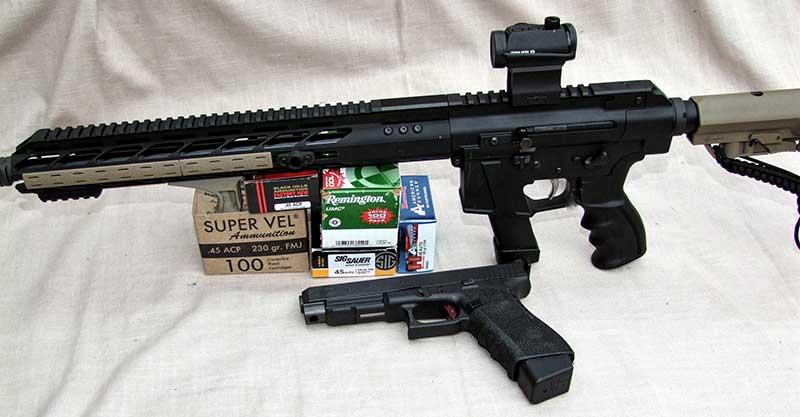
I obtained a mix of quality ammunition to test the Alphawolf. I procured samples of Black Hills 230-grain full metal jacket (FMJ), Hornady American Gunner 185-grain XTP, Remington 230-grain jacketed hollow points (JHP), and both SIG Sauer and Super Vel 230-grain FMJ. I picked these time-tested bullet designs because they have proven reliable in virtually all .45s I have fired them out of.
At the range I zeroed the Tru-Tec/Alphawolf at 25 yards. All five loads were nearly point of aim/point of impact, give or take literally fractions of an inch. Off the bench ten-round groups were all under 1½ inches. Bullet manufacture did not matter, which speaks highly of the consistency of bullet manufacturing and LWD’s attention to the building of the Alphawolf.
When I moved back to 50 yards, groups hovered around three inches. A 13-round group with a mix of all five loads measured exactly three inches, meaning the Alphawolf showed no preference for bullet weight or ojive. I was more than satisfied with the carbine’s accuracy using the Tru-Tec with its 2 MOA dot.
For PCC competition, this will easily keep a controlled pair in the center A-zone at 50 yards. If deployed for duty or personal protection, making precision shots will not be an issue either.
MUZZLE BRAKE
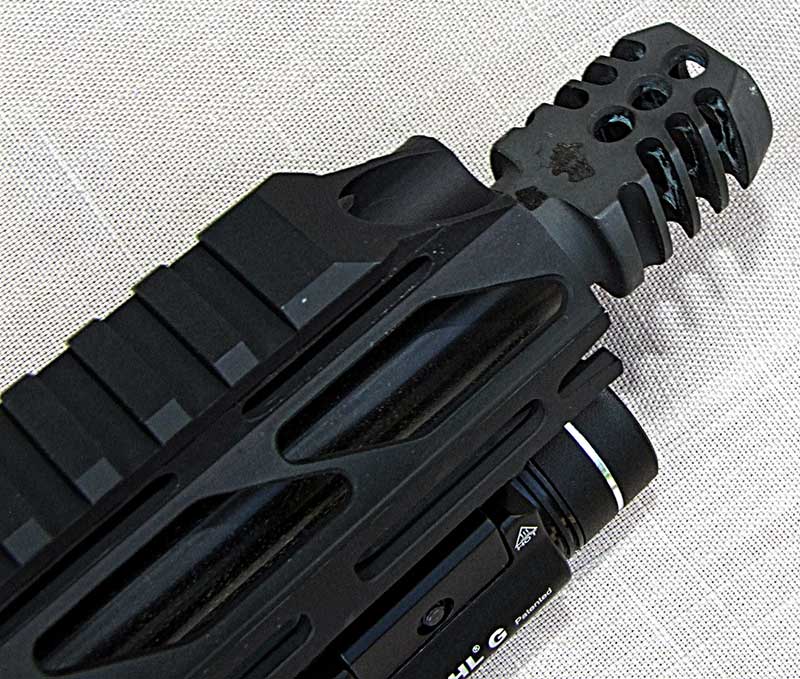
One thing that did stand out during shooting of the Alphawolf was how well the LWD .45 muzzle brake worked. We had joked that installing the brake was mostly about looking good when shooting. How much muzzle rise could a slow low-pressure round generate?
With the brake installed and shooting with an extended grip, there was no perceivable shift in dot while shooting controlled pairs. The sight did move, but not enough that I had to stop between shots to make a center-mass shot. To make a precision shot, only a slight pause to stabilize the dot was required.
With the crazy weather my area had in May, I was able to shoot the Alphawolf in monsoons, near winter-like temps, and sweltering summer heat. I didn’t lubricate or clean the beast through nearly 500 rounds of factory ammunition and 200 rounds of reloads. The carbine never failed to feed or fire. The reloads were the real test, since they included polymer coated 200-grain and a mix of hollow points. Accuracy and reliability never suffered.
LIGHT
Once I’d put the Alphawolf through its paces and it proved to be as reliable as the Glock 21 whose magazines fed it, I realized this would be the ideal truck/house gun. For that, it would need a light.
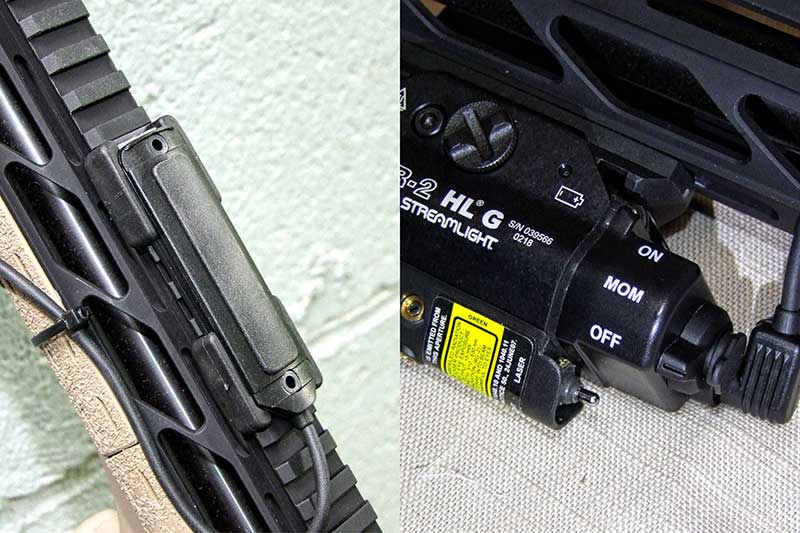
I chose a Streamlight TLR-2 HLG, which retails for about $340 online. While the light will function just fine with the toggle switch, it is more convenient to use the TLR remote, which will set you back $30. Make sure to order the Momentary Back Door that the jack plugs into, which is about $35.
This $400 investment gives you 800 lumens of light and a visible green laser. The toggle on the TRL lets you choose laser, white light, or combination, making it a versatile light for protection or duty. Generally I zero lasers on a long gun for point of aim/impact at 15 yards. That is sufficient for all but the most immense houses.
Over the last few years, I have found that once your laser/weapon is zeroed, you can accurately “hip shoot” or shoot a truly accurate flash sight picture. I do not suggest co-witnessing a laser and red dot sight because there are too many points of light for your eyes to focus on.
I put nearly 1,000 rounds of ammunition through the Alphawolf PCC.
UPGRADES
During the testing of the PCC, I decided this Alphawolf was going to be added to my vault. To make the carbine fit my needs, I placed an order with Brownells for a couple of parts. My add-ons were simple snap-on covers and a short angled forward grip—both Bravo Company items. These items give a consistent grip when mounting the rifle from a range table.
From other projects, I added a nickel-boron-coated fire-control group to give the Alphawolf a smoother trigger pull, and an ambidextrous safety for ease of operation. This also solved the stiff safety issue. Lastly I swapped out the OEM stock for a Mission First Tactical Minimalist because the angle fits me better and gives a bit longer pull length.
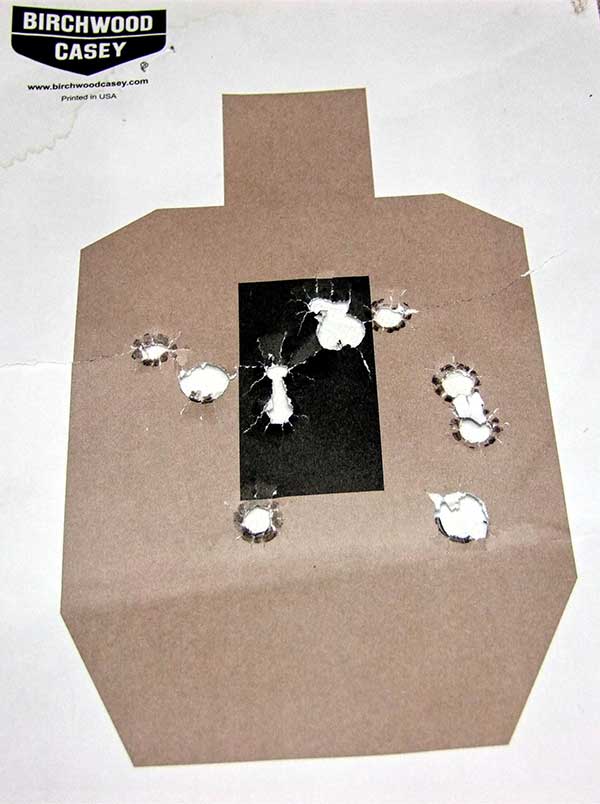
I found the Alphawolf an ideal companion for my Glock 41 MOS for training, competition, and protection. Shooting the .45 ACP PCC was less expensive than a .223 chambered AR, while allowing me to keep the same operation actions save for the side-mounted charging handle. Using a 26-round magazine even kept reloads close to the same as with an AR. This also reduced the gear needed for practice, since both firearms feed from the same magazine.
Lone Wolf Distributors built the Alphawolf from the ground up as a hard-use carbine. The PCC feeds ammunition of all bullet weights and designs. Downrange accuracy is consistently excellent. It handles well thanks to its light weight.
The LWD Alphawolf in .45 ACP is a versatile carbine. It will serve you well on the competition field, for home/vehicle defense, or even in a duty role if your agency approves.
If you’re in the market for a pistol-caliber carbine, put the Alphawolf on the short list.
SOURCES
LONE WOLF DISTRIBUTORS
(208) 448-0600
www.lonewolfdist.com
BLACK HILLS AMMUNITION
(605) 348-5150
www.black-hills.com
BRAVO COMPANY USA, INC.
(877) BRAVO-CO
www.bravocompanyusa.com
BROWNELLS
(800) 741-0015
www.brownells.com
HORNADY
(800) 338-3220
www.hornady.com
REMINGTON
(800) 243-9700
www.remington.com
SIG SAUER
(603) 610-3000
www.sigsauer.com
SUPER VEL AMMUNITION
(702) 232-4527
www.supervelammunition.com
STREAMLIGHT
(800) 523-7488
www.streamlight.com
TRUGLO
(972) 774-0300
www.truglo.com

